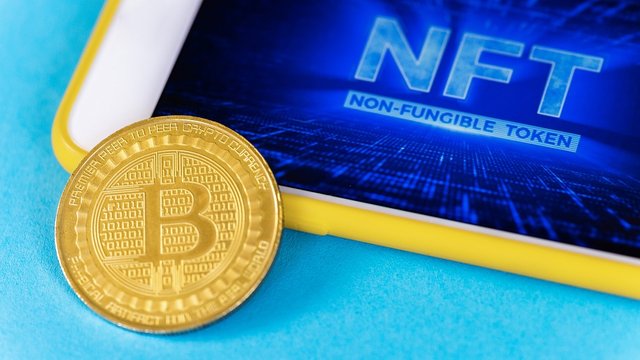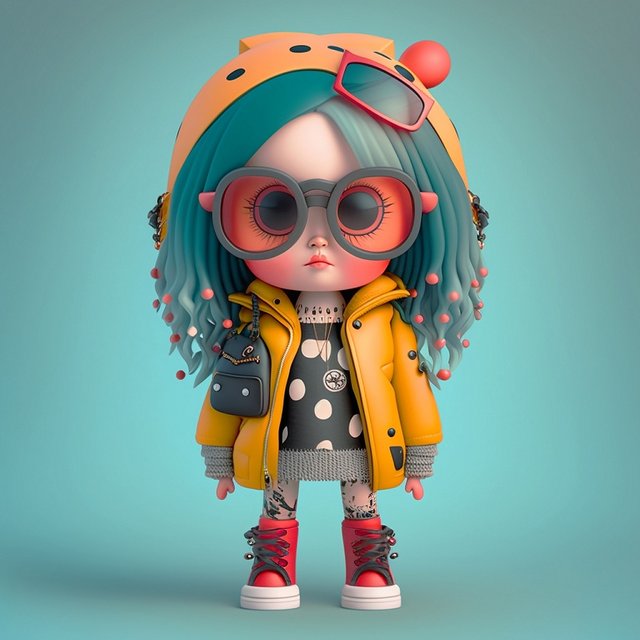What are non-fungible tokens and why are they revolutionizing the world?
A non-fungible token (NFT) is a unique, intangible digital asset created on the blockchain, such as a piece of art, a photo, or a virtual game collectible.
Each NFT has a limited quantity and cannot be exchanged for another, making it ideal for restoring authenticity. Moreover, they are distinguished by unique attributes and details that cannot be exchanged between them.
They are distinguished from each other by information and unique identifiers such as barcodes. The information that makes up the asset of an NFT is called " metadata ".

Image Source Freepik
Non-fungible tokens aim to have the same attributes as physical assets, such as uniqueness, rarity and proof of ownership; unlike fungible goods such as US$1, which has the same value in both Washington and Los Angeles. Incidentally, the best example of a fungible token is the cryptocurrency Bitcoin, having the same value wherever it is. Thus, fungible tokens are not unique, exchangeable and divisible and non-fungible ones are indeed unique, indivisible and cannot be exchanged with others.
The first non-fungible asset was created in 2014 as an experiment for the Seven on Seven conference at the New Museum in New York. Today, utility continues to grow in important niches including music, fashion design, academia, patents and approvals, but also sales and loyalty programs. Thus, anyone interested in valuing their digital creation such as music, art or photos can do so through NFTs.
What is the value of digital works and why do collectors pay such high prices for them?
The intrinsic value of a good, even in the "real" world, is hard to find. Thus, each content creator exposes their creation to the market at the desired price. If a future collector or user is willing to pay for it, then we can say that it is based on the old economic principle, supply and demand. The same principle applies to non-fungible tokens.
It is known that a collector paid the record sum of 69.3 million US dollars for a non-fungible token called "Everydays: The first 5000 Days", created by Mike Winkelmann, known under the pseudonym Beeple. Winkelmann's oeuvre contained over 5,000 drawings, each depicting a day of his last thirteen and a half years. In the first half of 2021 alone, more than US$21 billion worth of non-fungible tokens were traded.
How can we create a non-fungible token (NFT) and sell it?
The creation of a non-fungible token (NFT) can take place in any digital form, having as content both paintings, photos, texts, songs or videos, as well as virtual objects from video games, collectibles such as avatars, weapons or virtual currencies. Thus, we notice that there are no limits, everything depends on the imagination of the creator. But it is important that the non-fungible token format is digital or converted to one.

Image Source Freepik
The process of creating a non-fungible token is called "minting" and refers to converting a digital product into a resource and uploading it to the blockchain. In order to be loaded, the user needs a cryptocurrency such as Ethereum to store in the digital wallet compatible with the non-fungible token. When the creators of a token upload it to the blockchain, they can choose to impose a clause that specifies that, on any future sale, they will have a share, thus generating a passive income for them.
The value of an NFT is given by its uniqueness, and the markets play an important role in the success of its sale. Creators must consider important factors such as the types of blockchain supported, accessibility and standards imposed. The first known standard for non-fungible digital goods was that of the Ethereum blockchain, ERC-721. Although most platforms are based on the Ethereum blockchain, it does not have a monopoly on the NFT market.
One of the oldest and most well-known platforms is OpenSea , created in 2017 and allowing users to create non-fungible tokens efficiently and for free, but also to sell them. MakersPlace , by the way, allows users to do the same.
Safe storage of NFTs
Owning a digital wallet is an important factor for any cryptocurrency user and holder. However, the non-fungible token market eliminates the need to store user data, making the platform even more secure. There are numerous digital wallets for cryptocurrencies: both in the form of mobile applications and browser extensions, and physical ones.
To upload a non-fungible token to the blockchain, creators are forced to pay a cost that compensates for the electricity required to process and validate transactions through the blockchain.
Sale of Non-Fungible Tokens (NFT)
Before listing a digital good for sale, the user must fill in a file its title and description, which, for a quick and successful sale, should be as complex and detailed as possible.
The types of NFTs that have a real interest in trading are:
- Digital art: photos, paintings, cartoons, etc.
- Tracks
- Video clips
- Video games
- Avatars or profile pictures
- Collections of different types
The sale can be done in two ways: sale with a fixed asking price or at auction. In the case of the fixed price sale, the user sets the sale price directly, and in the case of auctions, the aim is to close the sale at the highest price received from the participants, starting from an initially set price.
Once the token has been sold, users can download the transaction details to their digital wallet and then convert the received cryptocurrencies into traditional money. If, after any period, you decide to sell the non-fungible token, you can do it through a so-called "second hand" sale, this way you will upload your token to the market and potential buyers will be able to purchase it either at the price you ask or in the auction system.
In some cases, however, the creators of the non-fungible token, once it is resold by the first owner, will no longer receive passive income on further sales.

Image Source Freepik
Promoting Non-Fungible Tokens (NFT)
Promotion can begin once the token has been uploaded to the blockchain, taking into account that potential buyers are well informed about its specifications and values. Among the most successful methods of promotion remains the one through which the direct offer is presented to people who are part of a community with a high interest in this niche.
Also, the promotion through online publications and news in the field of cryptocurrencies, as well as various podcasts attended by well-known people in the field, is also a real success.
Last but not least, promoting within social media communities helps to streamline a quick sale and people interested in buying non-fungible tokens in a specific niche find them much easier.
The future of non-fungible tokens
At the present time, digitization maintains its upward trajectory and NFTs will represent a viable solution for securing properties and assets under optimal security conditions. Although non-fungible tokens were originally intended to revolutionize digital markets and facilitate transactions between people, they currently trade more on demand than fundamentals.
In the future, non-fungible tokens will have a huge development potential in close connection with the Metaverse , which is essentially the online world. Entire communities are built in the blockchain, where sales of various goods and properties already take place. People will interconnect through Metaverse not only through mobile terminals or computers, but also through devices that reproduce virtual reality, which will be included in every room of the house.
Thank you, friend!


I'm @steem.history, who is steem witness.
Thank you for witnessvoting for me.
please click it!
(Go to https://steemit.com/~witnesses and type fbslo at the bottom of the page)
The weight is reduced because of the lack of Voting Power. If you vote for me as a witness, you can get my little vote.
Downvoting a post can decrease pending rewards and make it less visible. Common reasons:
Submit
No AI Content.
Downvoting a post can decrease pending rewards and make it less visible. Common reasons:
Submit
Downvoting a post can decrease pending rewards and make it less visible. Common reasons:
Submit
Upvoted! Thank you for supporting witness @jswit.
Downvoting a post can decrease pending rewards and make it less visible. Common reasons:
Submit